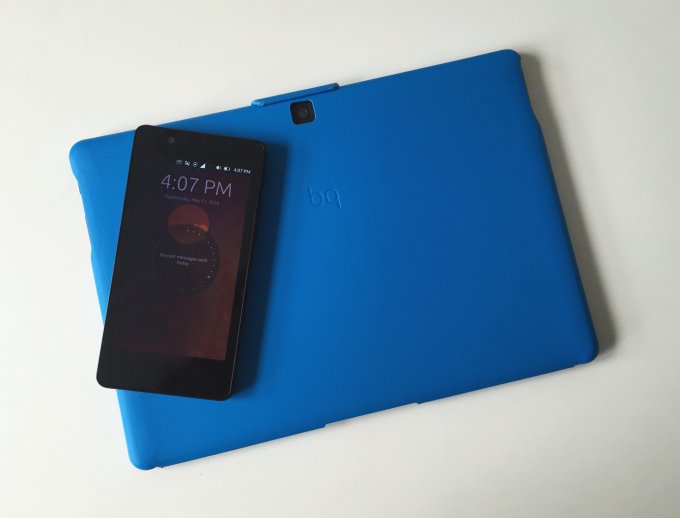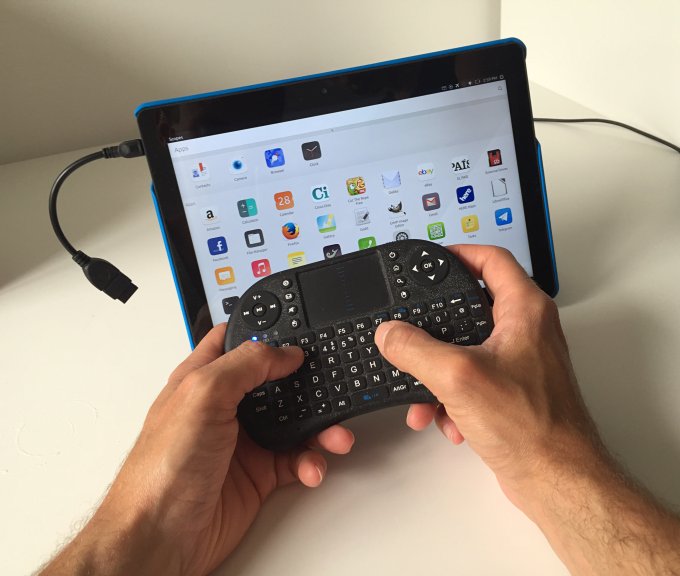Updated: June 11, 2016
Some relationships kick off with sparks and fireworks and ambulances and whatnot. Others have a humbler, slower, more restrained start, filled with dread and hope and anxiety. The latter scenario applies for my early hands-on experience with the BQ Aquaris M10 tablet, loaded with Ubuntu.
The initial test shows and proves the expected - this tablet is still a toy for nerds and geeks and fans, for people who want to dabble in the bold and the beautiful, but not the mainstream consumer. Then, I tried hooking it up to my LG Smart TV, to see what this Convergence mode is all about. Not bad, but then I didn't have a USB-to-micro-USB dongle to fully test my external keyboard. Now that I do, it is time for a proper rite of passage.

Nerds just wanna have fun
All right. As you may recall, hopefully, I've purchased a Wireless keyboard+mouse unit for my Raspberry Pi testing roughly two years ago. Since, this little gadget has seen a lot of wear and tear, but there's one problem: it comes with a standard USB connection. A few furious clicks of online shopping later, I had the right adapters in my house, and now I could really use the device as intended.

To make things a little more interesting, I had the M10 tablet clad in the protector thingie that I got from BQ, marine blue be its color. The cover is sturdy, and it fits the tablet well, with the right kind of holes and incisions for the buttons, ports and the camera. Looks quite stylish and lets you place the tablet on a table at roughly a 75deg angle, the way laptops are normally used. Indeed, this is what Convergence is aiming to give you, a laptop-like look & feel, with desktop applications for non-touch use.
The concept is not new, and 2-in-1 devices have been around for some time, mostly burdened with Microsoft payload. Microsoft Surface is probably the prime example of this model, but also maybe the most expensive. Regardless, there's no novelty in the concept itself. However, the Convergence mode does bring the seamless commodity, plus decent price, of Linux to both the mouse and touch worlds, making it more accessible to the average user than ever before.

I hooked up the dongle, and lo and behold, it worked. The external device was properly detected and initialized, and I had a real keyboard and a mouse to play with. Now, this is not ideal compared to a full 105-key piano, but then, it highlights the fact you can use the M10 tablet in the desktop mode with external gadgets with ease.
I really don't have any big complaints. The system switched between touch and desktop modes seamlessly, and then, all the windows had borders and buttons. I was able to use GIMP and LibreOffice with quite some grace. True, 10 inches of equity can be tricky on the eye, for purely ergonomic slash anatomic reasons. The mouse cursor was slightly edgy at times, and the tablet did experience a few hiccups, entirely related to its beta quality.

I also spent some time watching Youtube videos and listening to a few music clips, then went back to typing. So much more fun when you have the precision of conventional inputs rather than touch. But if and when you do want to laze about with a tablet, you can. No revolution here, but no one has taken mainstream Linux, without hiding its DNA, to this level yet. Plus the ease and transparency of it all, and just a tiny tiny smidgen of commercialism. If anything, Canonical can ramp it up.

Some fine pictures
A gallery if you will - in the best of pseudo-faux-fancy-art-poseur style. But it does highlight what and how this little tablet should be perceived and used, if you're into Convergence. And honestly, it's not a bad idea.





Conclusion
There you go. It took me three attempts to start warming up to the M10 tablet. Now, please don't forget, I am a sort of a fanboy, I'm a Linux user, and I have been waiting for this product for years now. So I'm completely biased, and you should most definitely disregard my opinion.
However, if you do feel like listening to me, then the sitrep is as follows: Ubuntu is on the right track. Not as fast, as elegant or as bug-free as the giants out there, but it is slowly wedging itself into the mobile market. I hope Canonical will have enough wind to weather the baby steps of this journey, for they are ripe with pitfalls. Then again, for roughly 300 dollars, you can have a fairly slick Ubuntu tablet that doubles as a desktop, does your Linux stuff, and you don't need to go through any big proprietary hoops. This is not a bad achievement, especially if you're after some light, casual use. And on the bright side, the more I'm using the Aquaris, the more I'm liking it. So maybe this relationship is meant to be after all.
Cheers.